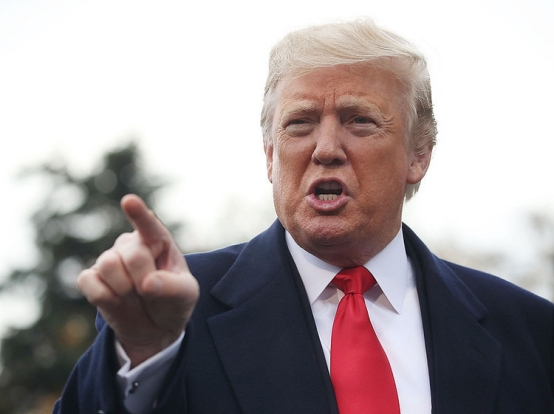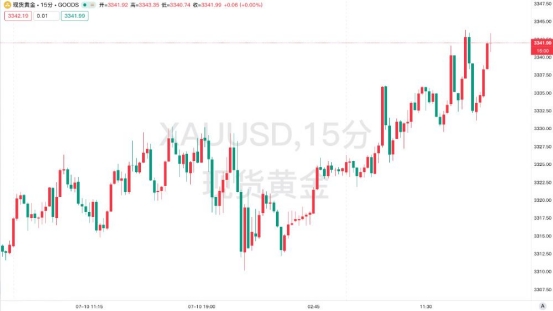Trump announced a 35% tariff increase on Canada and plans to implement universal tariffs, causing another upheaval in the global trade landscape
- 2025年7月15日
- Posted by: Macro
- Category: News

On July 10, local time, US President Trump announced through social media that a 35% tariff will be imposed on goods imported from Canada starting August 1. This is another major trade policy adjustment by the Trump administration after the 25%-40% tariffs were imposed on 14 countries including Japan and South Korea on July 7. In a letter to Canadian Prime Minister Carney, Trump accused Canada of "taking retaliatory tariff measures" and emphasized that this tariff is independent of all industry tariffs. If Canada does not cooperate to block the flow of fentanyl into the United States, the tariff may be further increased. At the same time, Trump revealed in an interview with NBC that he plans to impose a unified tariff of 15%-20% on countries that have not yet received the tariff letter. The global trade system is facing a comprehensive escalation of the "tariff storm."

The trade friction between the United States and Canada has a long history. In February 2025, Trump imposed a 10% tariff on Canadian energy products, and in March imposed a 25% tariff on steel and aluminum products, which led to Canada's retaliatory tariffs on US goods worth 29.8 billion Canadian dollars. The trigger for the 35% tariff was Canada's imposition of a digital service tax on US technology companies. Trump called it a "direct attack on the United States" and unilaterally terminated all trade negotiations. Data shows that Canada's trade surplus with the United States reached US$102.3 billion in 2024, with energy exports being the core source of the surplus. The United States accounts for 75.9% of Canada's total exports, and the economies of the two countries are highly interdependent.
Analysts pointed out that Trump's move is both a response to Canada's retaliatory tariffs and a continuation of his "America First" trade policy. According to data from the U.S. Department of Commerce, the U.S. merchandise trade deficit expanded by 12% year-on-year in the first quarter of 2025. Trump is trying to reduce the deficit through tariffs, but this move may lead to higher global supply chain costs and exacerbate inflationary pressures.
2. The global trade system faces a “paradigm shock”
Trump's tariff policy this time has two major characteristics: First, it is comprehensive. In addition to Canada, tariff letters have been sent to 23 countries, covering key areas such as copper, medicines, and transistors. Among them, a 50% tariff is imposed on copper and a tariff of up to 200% is imposed on medicines.
Second, it is mandatory, requiring countries to complete negotiations before August 1, otherwise they will face higher tariffs. Brazil and other countries have made it clear that they will take reciprocal countermeasures. Although the World Trade Organization (WTO) has ruled that the steel and aluminum tariffs during the Trump era were illegal, the current dispute settlement mechanism is paralyzed due to obstruction by the United States, and the binding force of international rules has been greatly weakened.
The United Nations Conference on Trade and Development warned that if the world's major economies continue to adopt tariff confrontations, global trade costs may increase by 15% in 2025, and the prices of end consumer goods may increase by 0.7%-1.2%, which will directly impact corporate profits and consumer confidence.
3. Gold market under tariff shock
1. Surging safe-haven demand pushes up gold prices
The trade uncertainty caused by the tariff policy directly stimulated the safe-haven buying of gold. In the Asian session on July 11, the spot gold price traded around $3,341 per ounce, up 0.5% from the previous day, hitting a nearly two-week high.

The minutes of the Federal Reserve's June meeting showed that officials had significant differences on the interest rate outlook. Ten of them expected two rate cuts this year, but Minneapolis Fed President Kashkari warned that tariffs could delay the decline of U.S. inflation to 2% by 6-12 months, suggesting that the rate cut could be reduced to 50 basis points.
3. Structural demand provides long-term support
Global central banks' gold purchases continue to provide bottom support for gold. In the first four months of 2025, central banks around the world purchased a net 256 tons of gold. The People's Bank of China has increased its gold holdings for eight consecutive months, with reserves reaching 73.9 million ounces (about 2,298.55 tons) by the end of June.
The market generally believes that the negotiation window before the tariffs take effect on August 1 is crucial. If Canada takes reciprocal countermeasures or other countries retaliate, global trade tensions may escalate into a "tariff spiral", and the value of gold as a "crisis pricing tool" will be further highlighted. Investors need to pay close attention to the July FOMC meeting's statement on the path of interest rate cuts and the breakthrough of the US dollar index at the key resistance level of 97.5. These variables will determine the boundaries of the short-term fluctuation range of gold.
